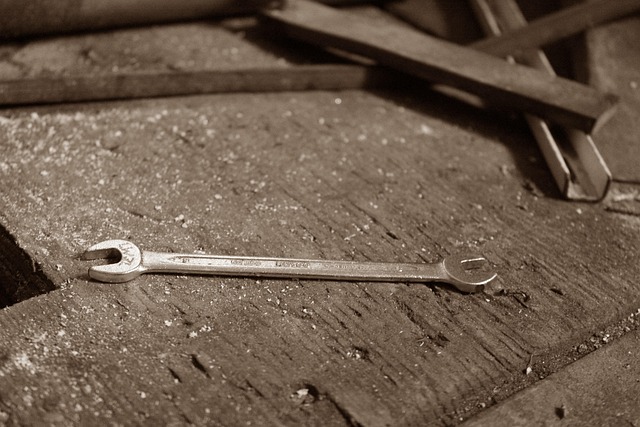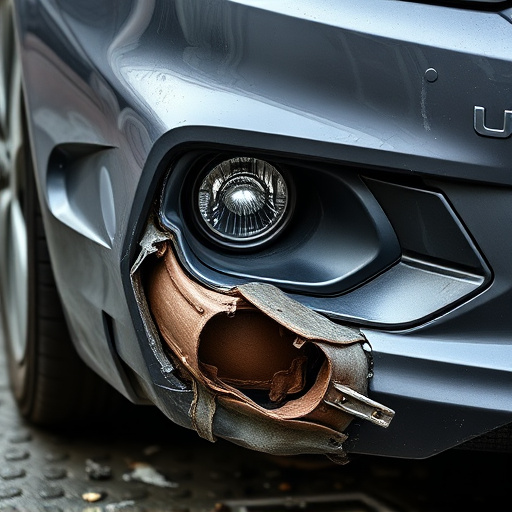Category: Tesla over-the-air diagnostic support
Tesla Over-the-Air Diagnostic Support: Revolutionizing Vehicle Maintenance
Introduction
In the rapidly evolving automotive industry, Tesla has consistently pushed boundaries with its innovative technologies. One such groundbreaking feature is Tesla’s over-the-air (OTA) diagnostic support system, which remotely monitors and updates vehicle performance, safety, and functionality. This article delves into the intricacies of this technology, exploring its impact, benefits, challenges, and future potential. By examining various aspects, from global adoption to technological innovations, we aim to provide a comprehensive understanding of Tesla’s OTA diagnostic support and its role in shaping the future of automotive maintenance.
Understanding Tesla Over-the-Air Diagnostic Support
Definition: Tesla over-the-air diagnostic support is a technology that enables remote access and management of various vehicle systems through wireless software updates. It allows Tesla vehicles to communicate with a cloud-based platform, enabling diagnostics, performance tuning, and firmware upgrades without the need for physical connections or visits to service centers.
Key Components:
- Vehicle Sensors and Connectivity: Tesla cars are equipped with advanced sensors and wireless communication modules that collect real-time data on vehicle health, performance metrics, and driver behavior. These sensors include various monitoring systems for engine, battery, braking, and safety-related components.
- Cloud-Based Platform: Tesla’s cloud infrastructure plays a pivotal role in processing and analyzing the vast amount of data generated by its vehicles. This platform facilitates remote diagnostics, enables software updates, and supports vehicle-to-cloud (V2C) communication.
- Over-the-Air Update Mechanism: The OTA update system allows Tesla to push software enhancements, bug fixes, new features, and security patches directly to compatible vehicles over wireless networks. This process ensures that owners receive the latest improvements without any physical intervention.
Historical Context: Tesla’s journey with OTA diagnostic support began as early as 2014 when it introduced remote software updates for its vehicles. Since then, the company has consistently enhanced and expanded this capability, learning from customer feedback and technological advancements. In 2017, Tesla achieved a significant milestone by enabling full self-driving (FSD) capabilities over-the-air, marking a pivotal moment in autonomous vehicle development.
Significance: This technology offers several advantages:
- Convenience and Accessibility: Owners can access diagnostic services and updates remotely, eliminating the need for frequent service center visits.
- Improved Safety: Rapid bug fixes and security patches can address potential safety issues, ensuring vehicles remain up-to-date with the latest safety standards.
- Enhanced Vehicle Performance: OTA updates enable performance tuning, over-the-air firmware upgrades, and feature additions, keeping vehicles competitive in a rapidly evolving market.
- Data-Driven Insights: Tesla collects valuable data on vehicle behavior and driver patterns, which can be used for research, development, and personalized customer experiences.
Global Impact and Trends
Tesla’s OTA diagnostic support has had a profound impact worldwide, shaping the way automakers approach vehicle maintenance and updates.
Regional Adoption:
- North America: Tesla’s home market has been at the forefront of OTA adoption, with high acceptance rates due to strong brand loyalty and supportive regulatory environments. The US National Highway Traffic Safety Administration (NHTSA) has encouraged wireless safety updates, providing a favorable framework for Tesla’s OTA capabilities.
- Europe: The European Union’s vehicle regulations have driven the need for remote diagnostics, pushing automakers to adopt OTA systems. Tesla has made significant strides in this region, particularly with its Supercharger network, which facilitates quick and convenient software updates.
- Asia Pacific: Countries like Japan and South Korea have shown interest in OTA technologies, driven by government initiatives and consumer demand for connected car services. Tesla’s partnerships with local automakers have accelerated the integration of OTA support in these markets.
Trends Shaping the Future:
- Increased Connectivity: The trend towards highly connected vehicles is driving the growth of OTA diagnostic support. Advanced driver assistance systems (ADAS) and autonomous driving capabilities rely on over-the-air updates to stay current with regulatory requirements and safety standards.
- Remote Service and Repair: The COVID-19 pandemic has accelerated the shift towards remote vehicle services, including diagnostics and repairs. OTA capabilities are essential in ensuring continuity of service during restricted mobility periods.
- Global Standardization: Automakers are working towards global standards for wireless communication protocols to facilitate cross-border OTA updates. This standardization will streamline the process and reduce regional variations.
Economic Considerations
The economic implications of Tesla’s OTA diagnostic support are multifaceted, impacting various sectors.
Market Dynamics:
- Competitive Landscape: Tesla’s OTA capabilities have disrupted traditional service models, forcing competitors to invest in similar technologies to stay competitive. This has led to a more dynamic and innovative market for vehicle maintenance services.
- Customer Expectations: Consumers now expect remote access to vehicle diagnostics and updates, setting new standards for customer satisfaction and loyalty.
Investment Patterns:
- Automotive Manufacturers: Major automakers are investing heavily in OTA technology, recognizing its potential to improve efficiency, reduce costs, and enhance customer retention. Companies like Ford, General Motors, and Volkswagen have announced significant initiatives to integrate over-the-air updates into their vehicle lines.
- Technology Providers: Startups and established tech companies are emerging as key players, offering cloud infrastructure, wireless communication solutions, and software development kits (SDKs) tailored for OTA applications. These partnerships enable automakers to leverage specialized expertise.
Economic Impact:
- Service Center Efficiency: OTA updates reduce the workload on service centers, allowing technicians to focus on complex repairs and maintenance tasks that require human expertise. This leads to cost savings and improved operational efficiency.
- New Business Models: The rise of OTA support opens up opportunities for new business models, such as remote fleet management services, over-the-air subscription plans, and digital vehicle service platforms.
Technological Advancements
Tesla’s OTA diagnostic support has been at the forefront of technological innovation, pushing the boundaries of what is possible in vehicle connectivity.
Key Advancements:
- 5G Connectivity: The integration of 5G networks enables faster and more reliable OTA updates, ensuring vehicles can download large software packages quickly. This is crucial for advanced driver assistance systems (ADAS) that require frequent over-the-air updates.
- Edge Computing: Tesla’s utilization of edge computing allows data processing closer to the source, reducing latency and improving response times for real-time diagnostics and performance tuning.
- AI-Driven Diagnostics: Artificial intelligence algorithms analyze vehicle sensor data to detect anomalies and predict potential issues, enabling proactive maintenance and enhancing safety.
- Secure Communication Protocols: Tesla employs advanced encryption and authentication mechanisms to safeguard vehicle data during OTA communications, ensuring privacy and security.
Future Potential:
- Vehicle-to-Everything (V2X) Communications: Future advancements will likely include V2X capabilities, enabling vehicles to communicate with infrastructure, other vehicles, and pedestrians. This will enhance safety and facilitate complex traffic scenarios.
- Quantum Computing Integration: While still in the early stages, quantum computing could revolutionize OTA updates by significantly speeding up data processing and encryption, making it feasible for even more sophisticated vehicle systems.
- Decentralized Networks: Blockchain technology may play a role in securing and managing OTA updates, ensuring transparency and preventing unauthorized access to vehicle software.
Policy and Regulation
The development of Tesla’s OTA diagnostic support is guided by various policies and regulations that ensure consumer safety, data privacy, and fair competition.
Key Policies and Regulatory Frameworks:
- Data Privacy Laws: Data protection regulations like the General Data Protection Regulation (GDPR) in Europe and the California Consumer Privacy Act (CCPA) in the US set guidelines for collecting, storing, and using vehicle data during OTA communications.
- Automotive Safety Standards: Organizations such as the Society of Automotive Engineers (SAE) and NHTSA establish standards for remote diagnostics and safety systems, ensuring vehicles remain safe and reliable even with over-the-air updates.
- Radio Frequency (RF) Spectrum Allocation: Governments allocate specific RF bands for vehicle communication, ensuring efficient and interference-free OTA transmissions.
- Competition Laws: Antitrust regulations aim to prevent monopolistic practices in the OTA update space, fostering fair competition among automakers and service providers.
Influence on Development:
- Compliance and Certification: Automakers must navigate complex regulatory landscapes to ensure their OTA systems comply with global standards. This process involves extensive testing and certification, ensuring vehicle safety and data privacy.
- Collaboration and Standardization: Industry collaborations are essential to develop common protocols for OTA communications, enabling interoperability across different vehicle models and manufacturers.
Challenges and Criticisms
Despite its numerous benefits, Tesla’s OTA diagnostic support faces several challenges and criticisms that must be addressed to ensure widespread adoption and public trust.
Main Challenges:
- Security Concerns: The potential for cyberattacks on vehicles with OTA capabilities is a significant worry. Malicious actors could exploit vulnerabilities to gain control of vehicles, posing safety risks.
- Data Privacy: As vehicle data becomes increasingly digitized, protecting sensitive information from unauthorized access and misuse is critical.
- Network Dependability: OTA updates rely on stable wireless networks. In areas with limited or unreliable connectivity, remote diagnostics and updates may not be feasible.
- Consumer Trust: Building consumer trust in the security and reliability of OTA systems is essential for widespread adoption. Transparent practices and robust security measures are necessary to assure owners.
Criticisms and Strategies:
- Security Enhancements: Tesla has been working closely with cybersecurity experts to strengthen vehicle security. Regular software updates, encryption improvements, and secure boot processes help mitigate potential risks.
- Data Anonymization: Implementing techniques to anonymize vehicle data during processing and storage can address privacy concerns while still providing valuable insights for diagnostics and research.
- Hybrid Update Approaches: To tackle network reliability issues, a hybrid approach combining OTA updates with periodic physical visits could be adopted, ensuring essential safety updates are received even in remote areas.
- Transparent Communication: Open dialogue about OTA capabilities, security measures, and data handling practices can help build consumer trust. Providing detailed information on how data is used and protected can address common concerns.
Case Studies: Successful Applications
Case Study 1: Tesla Autopilot Over-the-Air Updates
Tesla’s Autopilot system, which enables advanced driver assistance, has benefited significantly from OTA updates. In 2020, Tesla deployed an over-the-air update that improved the accuracy and reliability of its Autopilot software, allowing for smoother and safer autonomous driving. This update was delivered to millions of vehicles simultaneously, showcasing the scalability of OTA capabilities.
Key Takeaways:
- Successful deployment of a complex software update, demonstrating Tesla’s technical expertise and global reach.
- Enhanced safety and performance, highlighting the importance of timely OTA updates for ADAS systems.
Case Study 2: Remote Software Repair in China
Tesla faced challenges in China due to limited mobile network coverage in some rural areas. To address this, Tesla collaborated with local service providers to implement a hybrid OTA/physical repair system. In this model, initial software diagnostics are performed remotely, and if issues require complex repairs, customers are directed to nearby service centers for physical attention.
Lessons Learned:
- Customized solutions are often necessary to cater to regional network and regulatory environments.
- A hybrid approach ensures essential safety updates reach all vehicles while optimizing service center utilization.
Future Prospects: Looking Ahead
The future of Tesla’s OTA diagnostic support holds immense potential, with emerging trends shaping the direction of this technology.
Potential Growth Areas:
- Autonomous Vehicles and Advanced Driver Assistance Systems (ADAS): As autonomous driving becomes more prevalent, OTA updates will play a crucial role in keeping these complex systems up-to-date with evolving regulations and safety standards.
- Connected Car Ecosystem: Tesla’s OTA capabilities can integrate seamlessly with smart home devices, wearables, and other connected services, creating a comprehensive digital experience for owners.
- Global Market Expansion: With increasing globalization, Tesla’s OTA system will need to adapt to diverse regional requirements and network infrastructures to cater to its growing international customer base.
Emerging Trends:
- Over-the-Air Hardware Upgrades: Future vehicles may incorporate modular designs, enabling over-the-air hardware upgrades to enhance performance or add new features without the need for physical replacements.
- Vehicle-to-Cloud (V2C) Marketplaces: Tesla could facilitate V2C marketplaces where owners can buy and sell used vehicle data, creating a new revenue stream and fostering a more sharing-oriented economy.
- AI-Driven Proactive Maintenance: Advanced AI algorithms will enable vehicles to predict maintenance needs based on usage patterns and environmental factors, optimizing OTA update schedules.
Strategic Considerations:
- Partnerships and Alliances: Tesla should continue forming strategic partnerships with technology providers, network operators, and other automakers to leverage shared resources and expertise, accelerating OTA development and adoption.
- Invest in Cybersecurity: As the attack surface for cybercriminals expands, Tesla must allocate substantial resources to cybersecurity research and development, ensuring its OTA systems remain secure.
- Consumer Education: Providing comprehensive education on OTA benefits, security measures, and privacy practices will foster a positive perception of these technologies among potential owners.
Conclusion: Shaping the Future of Automotive Maintenance
Tesla’s over-the-air diagnostic support has revolutionized vehicle maintenance, offering unprecedented convenience, efficiency, and safety enhancements. As the technology continues to evolve, it will play an increasingly vital role in the global automotive landscape. By addressing challenges, adopting emerging trends, and collaborating with stakeholders, Tesla can solidify its position as a leader in OTA diagnostics, setting new standards for the industry.
FAQ Section:
Q: How does OTA diagnostic support improve vehicle safety?
A: OTA updates enable the quick deployment of safety patches and bug fixes, addressing potential vulnerabilities that could compromise vehicle safety. This real-time approach ensures vehicles remain up-to-date with the latest safety standards.
Q: Can Tesla’s OTA system be used for remote vehicle control?
A: While Tesla’s OTA capabilities focus primarily on diagnostics, performance tuning, and software updates, some functions may enable limited remote access for specific tasks, ensuring driver convenience and safety.
Q: What happens if a security vulnerability is discovered in a Tesla vehicle’s OTA system?
A: Tesla has a dedicated team of cybersecurity experts who continuously monitor and patch any identified vulnerabilities. They promptly issue security updates through the OTA channel, minimizing potential risks.
Q: How does Tesla ensure data privacy during OTA communications?
A: Tesla employs encryption protocols, anonymization techniques, and secure data storage practices to protect vehicle data. They also adhere to global data privacy regulations, such as GDPR and CCPA, to maintain consumer trust.
Q: Can I disable Tesla’s OTA diagnostic updates?
A: Users have the option to customize their preferences regarding OTA updates. While disabling all updates may impact vehicle performance and safety features, users can choose specific settings to control the frequency and type of over-the-air communications.

















